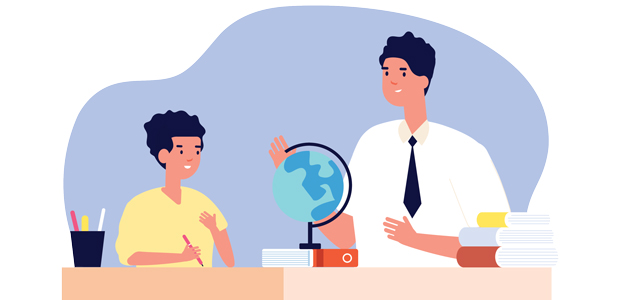
Private tuition planned to help students catch up, but are the odds against them?
The billions promised by the government for catch-up tuition sounds like a lot of money, but when you work it out on an individual basis it’s barely enough to cover a few hours of one-to-one tuition per student. I believe that edtech rather than tuition provides the answer to meet the catch-up challenge, and his micro-tuition experiment proves that this approach can work.
The government has a famously traditional view with regard to the purpose of education and how it should work. Whether looking at the emphasis on direct instruction, banning mobile phones or classroom seating plans, the opinions of policy makers rarely embrace the potential of new ways of thinking. So it came as little surprise that when addressing the massive learning loss suffered by students this past 18 months, the solution proposed was to buy in tutors.
While that has been shown to be impactful in certain conditions, there is no evidence to suggest that this can make the difference needed at scale, and there are fundamental weaknesses in the private tuition model that work against schools or students getting a good return on their investment of time and money.
The first issue is diagnosis: from a school leader’s perspective, determining which students most need support or might most benefit from extra tuition is a huge challenge… and a constantly moving target as students’ attainment is constantly changing.
The second issue is planning and reporting: from the tutor’s perspective, knowing where any given student needs help to be focused is a huge challenge and inevitably leads to redundancies and wasting precious time. Measuring any meaningful impact from the lesson - whether it led to improvements, or whether outcomes from that lesson can feed back into the child’s schooling are prohibitive (and I suspect will be entirely overlooked).
A related third issue around this is quality assurance. Tutors are unlikely to have formal training, little or no oversight, and will be unlikely to receive any guidance from teachers. So how much confidence can a budget-holder have that their resources are well spent, especially given how hard it is to target and plan for sessions or measure the impact?
The solution to mitigating these risks must fall to better deployment and implementation of education technology, both to support learning and embed knowledge, and to give the necessary diagnostic information to support any additional tuition that takes place and measure its effect.
The key to catch-up tutoring is to use it as little as possible
My viewpoint, as the founder of an edtech company and co-founder of the Edtech Evidence Group, may appear biased, but the truth is that I built Tassomai over the last 5 years with the explicit intention of reducing the need for extra tuition and for making sure any tuition that does happen is efficient, targeted and effective.
One of the great things about our position in the sector is that we work closely with hundreds of schools, but have a dynamic team who are able to quickly adapt and experiment with the product. So it was when it came to responding to the needs of our students as they began blended or home learning this year:
For the duration of the academic year, we’ve been piloting a new approach with thousands of students around the country. To support users of our online learning program, and to test the feasibility of a highly targeted, micro-tuition model, we made free daily sessions available over video call. Not only were we able to deliver real tuition where most needed, but we’ve been able to gain valuable insight to develop our service. In the process, I’ve personally delivered over 500 one-to-one free tuition sessions this year for children around the UK.
While schools are likely to pay £15-£20 per hour for government-backed tuition, they are paying around £5 per year to use Tassomai, and in so doing, hugely reduce the need for tuition and make what help they do get more impactful.
Foremost in our approach is that students themselves do the work to learn through structured, tailored retrieval practice on our app. Not only does this expose where their gaps are, but also naturally fills in many of these knowledge gaps in a way that sticks far better than learning delivered by a tutor.
Teachers use our data to see where students are struggling and plan their own revision teaching accordingly - again, far more efficient than expensive tuition. If, finally, students do book free tuition time with me, I’m able to see instantly where the problems lie and help them to fix those little issues. In a ten minute micro-tuition session, with the insight that Tassomai gives me through data-visualisation tools like the Tree, I can do more to help a student than I suspect I could manage in forty minutes without. However, I find myself far more frequently showing students how to use Tassomai to help themselves rather than rely on a tutor.
Help students to help themselves
This highlights a vital principle in all this that I think the government is missing. Where students may have fallen behind, what they need is rarely the application of expensive, inefficient and potentially ineffective tutoring. Instead, giving the support to help themselves not only makes a bigger difference in the short term, but makes them far more self-sufficient in the long run… and that’s how you get pupils to catch up.

